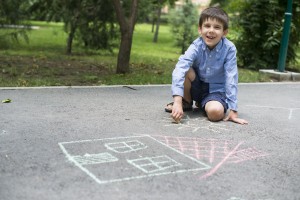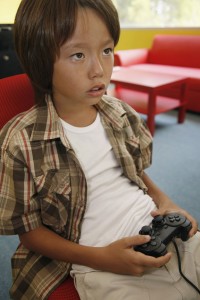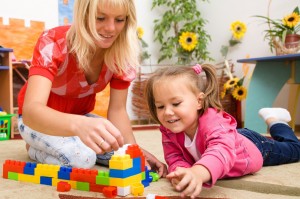 How to effectively raise your child’s self esteem and make them more confident when they are doing well and when they are not doing well-through healthy praise and effective criticism.
How to effectively raise your child’s self esteem and make them more confident when they are doing well and when they are not doing well-through healthy praise and effective criticism.
Confidence and self-esteem are key ingredients in a healthy and happy child. Teaching a child to have self-confidence is an important task parents have from the very beginning of a child’s life.
Having a high level of confidence and self-esteem will help children get along well with others and believe they are worthy of having healthy and loving relationships as they mature.
What is the difference between self esteem and confidence?
Self-esteem is how your child feels about themselves overall. It means they see themselves in a realistic and positive light and have self-love.
Confidence is how your child feels about their abilities in various situations. Your child may have self-esteem overall but have low confidence in something like math.
If your child is struggling with either one of these then some of the tips below can help you.
Why are confidence and self-esteem important?
There is convincing evidence that people with high self-esteem and confidence are happier, as well as more likely to undertake difficult tasks and persevere in the face of failure.
What contributes to healthy self-esteem and confidence?
Be realistic based on developmental stage and individual personality and abilities.
Childhood experiences that contribute include:
- Being listened to
- Being spoken to respectfully
- Getting appropriate attention and affection
- Having accomplishments be recognized and mistakes or failures be acknowledged and accepted
Ways to build self-esteem and confidence in children.
Praise Enthusiastically and Genuinely
When a parent genuinely and enthusiastically gives attention to something they like that their child did, the child is going to feel happy that their parent is proud of them. This will result in the child feeling confident in themselves and proud that they engaged in a behavior that their parent is genuinely proud of.
*Tip: If your child is sharing a toy with their sibling or peer, say, “I love how you are sharing with your brother! It makes me so proud to see that you are thinking about his feelings!”
Teach Problem Solving
When children know how to solve problems on their own, it helps them conquer difficult situations independently. Depending on a child’s age, they will need some guidance to solve bigger problems. Modeling appropriate reactions to problems is the best way your child can learn how to solve every day problems.
*Tip: Model problem solving while using child-friendly language (i.e. big vs. little problem). For example, when a cup spills and water goes on the floor and on your clothing say, “this is a small problem, I’m going to get a napkin and wipe up the water.” If you burn your finger while cooking dinner say, “this is a big problem, I’m going to need to get medicine for my finger.”
Set Your Child Up For Success
Encourage your child to participate in activities that he or she is interested in or has natural talents in. Teach your child that they are a unique individual and they will benefit from enhancing themselves based on their instinctive abilities and desires. When a child’s skills improve, their confidence increases.
*Tip: Watch and observe your child in order to understand what their innate interests are. Once you determine something they are interested in or curious about, encourage them to partake in a class or group about that topic.
Resist Comparisons
It is easy to make comparisons from child to child by looking around a room filled with kids and saying, “Why can’t you be as calm as Johnny?” or “Why can’t you sit up straight like Sarah?” Comparing your child to another child will make them feel badly about themselves, instead of increasing their confidence by giving them a compliment or praising them for a behavior that you liked.
*Tip: When you feel like you want to compare your child to another child, think to yourself, “I’m lucky that this is my child. He/she is so great at x,y,z and no child is perfect.”
Give Your Child Responsibilities
Giving responsibility to a child helps them feel more valuable and helpful in their home and community. When a child feels that they are valuable, their confidence will boost.
*Tip: Responsibilities should vary depending on your child’s age and cognitive level of functioning. For younger children, choose easier and more manageable tasks while for older children you can choose tasks with increased difficulty.
Here are some to consider: Putting laundry in laundry basket, helping fold and put away laundry, washing dishes, unloading dishwasher, feeding and walking pet, putting toys away, setting table, light meal prep, putting groceries away, getting the mail, help prepare lunch to take to school etc.
*Tip: If you make a big deal about the job you are giving to your child, it will be even more exciting for your child to complete that task. For example, tell your child that the task is “special”.
*Tip: Create a “job chart” to help your child know what his or her jobs are. You can create a visual representation of the task if a child is too young to read.
- Praise: focus on what you see the child doing, rather than with a totalizing phrase. (maybe mention some research as to why this is important?)
- Being genuine
- Being specific-describe what you see with appreciation
- Giving your child a 1-2 word phrase to describe the trait he has just shown so that next time he can praise himself with it
- Catching your kids being good
- Saving some praise for later-mention at the dinner table how Johnny helped you put away all the toys earlier in the day
- Criticism: describe what you see and what needs to be done
Separation anxiety is the stage where a young child becomes anxious at the threat of separating from their primary attachment figure. According to the Diagnostic and Statistical Manual-IV, separation anxiety is a fairly common anxiety disorder, which occurs in children younger than 18 years old and persists for at least 4 weeks.
Signs of Typical Separation Anxiety:
- Clinginess
- Crying when a parent is out of sight
- Strong preference for only one parent over all other people
- Fear of strangers, or of family and friends who are not frequently seen
- Resistance to separation at bedtime or nap time
- Waking at night crying for a parent
- Regression to an earlier stage of development, such as thumb-sucking or “baby-talk”
- Anxiety that is easily eliminated upon a parent’s appearance
Clinically Significant Symptoms:
- Reluctance to fall asleep without being near the primary attachment figure
- Excessive distress (e.g., tantrums) when separation is imminent
- Nightmares about separation-related themes
- Bedwetting
- Homesickness (e.g., a desire to return home or make contact with the primary caregiver when separated)
- Frequent physical or somatic symptoms (e.g., abdominal pain and palpitations)
- Fear of being alone
Ways to Help Your Child Cope With Separation Anxiety:
- Encourage independent playtime at home
- Model calm behavior: Try to appear relaxed with a happy or calm expression
- Promote positive self-esteem
- For preschool aged children, a play Hide and Seek or Peek-a-boo. Play this game at home and allow a full minute to pass without being visible to your child.
- Help your child hang up their coat
- Read a book in the reading area and wave goodbye from the door
- Encourage your child to draw a picture to bring home for you
- Attach a picture of your family in the child’s cubby
- Allow your child to carry something special into school daily
*However, it is very important to discuss your drop-off routine with the classroom teacher to make sure it is acceptable in that classroom.
Book Recommendations for Transitioning Back to School:
- The Kissing Hand, by Audrey Penn
- Llama Llama Misses Mama, by Anna Dewdney
- I Love You All Day Long, by Francesca Rusackas and Priscilla Burris
- First Day Jitters, by Julie Danneburg and Judith Dufour Love
- The Invisible String, by Patrice Karst
 The growing digital world elicits mixed reactions and feelings. Social media, such as: Facebook, Twitter, Tumblr or Instagram, just to name a few, have introduced new possibilities in communication, networking, and staying connected to others. With these growing possibilities, navigating technology and social media can be fun, confusing or just plain common.
The growing digital world elicits mixed reactions and feelings. Social media, such as: Facebook, Twitter, Tumblr or Instagram, just to name a few, have introduced new possibilities in communication, networking, and staying connected to others. With these growing possibilities, navigating technology and social media can be fun, confusing or just plain common.
Increasingly, teenagers are spending more time on social media and parents are expressing ambivalence and sometimes frustration. danah boyd (she prefers not to capitalize her name), the author of It’s Complicated: The Social Lives of Networked Teens researched the role social media plays in the lives of teenagers. She emphasizes that the activities at the core of social media are here to stay. They include:
- socialization
- self expression
- exploring privacy and
- sharing information
For parents, what does that mean? It may suggest that learning the role social media has and understanding the culture, in the context of teenagers, can decrease concerns and help to manage expectations. Understanding the uses of social media can help parents provide support and assist a teen in appropriately and respectfully navigating social interactions and increasing their autonomy.
Embracing the new trends can be a positive experience rather than a dreaded and anxiety provoking one. A partnership can be developed between a parent and a teenager, rather than having conflict and contention. A parent can learn more about social media nuances; better understand the role social media has for their child while providing insight and guidance. boyd elaborated on “four affordances” that “shape mediated environments created by social media.” They are:
- persistence
- visibility
- spreadability
- searchability
These are likely what contribute to parents’ anxiety but are areas teenagers may not readily reflect on due to their developmental stage. Helping a teenager gain awareness of these four areas, while meeting their needs to socialize with peers, can have a positive impact on their social media activity.
Overall, as trends continue to change, it is useful to keep an open mind while providing supervision and support. An open discussion, asking questions and communicating with your teen is useful to reinforce positive and negative consequences that engaging in social media may present.
 During the month of July, The New York Times had two noteworthy pieces by Jane E. Brody in the Personal Health section that focused on screen time and children. They grabbed my attention. Both articles highlighted similar distress that is often expressed by many parents coming into our practice. The most common frustrations expressed are regarding the length of time kids spend on devices, their limited face to face interactions with others, and the homework struggles that are a result of the distractions technology creates.
During the month of July, The New York Times had two noteworthy pieces by Jane E. Brody in the Personal Health section that focused on screen time and children. They grabbed my attention. Both articles highlighted similar distress that is often expressed by many parents coming into our practice. The most common frustrations expressed are regarding the length of time kids spend on devices, their limited face to face interactions with others, and the homework struggles that are a result of the distractions technology creates.
After reading Brody’s article on July 6th, I was interested in the PBS documentary, “Web Junkie” she referenced and soon after watched it. The documentary focused on China’s struggle and their approach to decrease the growing preoccupation among teenagers’ internet usage and gaming. The documentary specified that in China “internet addiction” is the number one public health threat to teens. Many parents in New York City think similarly; that their children and teens are hooked on screens although a formal diagnosis for this behavior has not yet been established.
A challenge for many parents is that schools require technology to complete academic demands. Additionally, youths’ interests are often centered on technology for entertainment and social connection. This leads to conflict and difficulties. Parents attempt to restrict time spent on screens and struggle with their approach. An important interpretation Brody plain and simply stated is that the use of screens has been reinforced by providing a consistent “babysitter” for children. This may be true for many families and an interesting idea to reflect on.
The documentary “Web Junkie” further put emphasis on technology as a teenager’s attempt to cope with loneliness. Connecting with others during games instantaneously or through social media likely reinforces use. All of the aforementioned points suggest the relationships our youth have with their technology devices is increasing and many parents are concerned and looking for ways to make changes.
How does a family start to make changes to create a healthy balance and live in a world surrounded by electronic devices? Some suggestions are:
- Establish rules & structure around technology at home
- Set limits and routines with devices
- Have device free time – for everyone; parents too!
- Model & encourage other activities to engage in at home
- Have alternative activities readily available for the child
- Get out and get physical
- Talk with your children
- Have family time without screens (i.e., play a board game, go to the park, bake cookies)
Bottom line, technology has advantages and is useful. Screens bring entertainment. Devices (phones, computers) are an important almost an obligatory part of everyday life. Internet has become a necessity for academic demands and social media a means to connect with others. Therefore, we must adapt, learn to live sensibly in a technology based world and help our children do the same. Change can happen when we help our youth develop healthy boundaries, routines and appropriate relationships.
Parent-Child Interaction Therapy (PCIT) has traditionally been thought of as a specific treatment method for children between the ages of 2-7 who exhibit symptoms of disruptive behavior disorders (e.g., Attention-Deficit Hyperactivity Disorder, Oppositional Defiant Disorder). (more…)
 A recent article in the New York Times highlighted the effectiveness of ignoring negative behaviors and praising positive behaviors.
A recent article in the New York Times highlighted the effectiveness of ignoring negative behaviors and praising positive behaviors.
In the article, the mother noted “the results were stunning. Within a week, my son raised his hand to hit me, then dropped it and complimented me on my eyes. He’d quickly learned that he’d only get attention for positive behavior. The aggression stopped — at home. (more…)
 Getting your child to listen, the first time, without losing your temper or souring your relationship can be no easy task.
Getting your child to listen, the first time, without losing your temper or souring your relationship can be no easy task.
“Why won’t he just listen and do what I tell him?”
“Can you please just make her listen to me?”
“I just want him to do what I ask WHEN I ask him, not an hour later.” (more…)
 Enuresis and Encopresis are Elimination Disorders acknowledged in the DSM 5. They characterize difficulties with toileting behaviors.
Enuresis and Encopresis are Elimination Disorders acknowledged in the DSM 5. They characterize difficulties with toileting behaviors.
Often when children first learn to use the bathroom, accidents are expected to happen. Toileting behavior that is considered clinically significant is when instances of eliminating urine and/or feces are occurring outside of the bathroom, inappropriately and frequently. Specifically, at least 1-3 times for 3 months and the child is older than 4 or 5. These behaviors can occur on their own or together.





